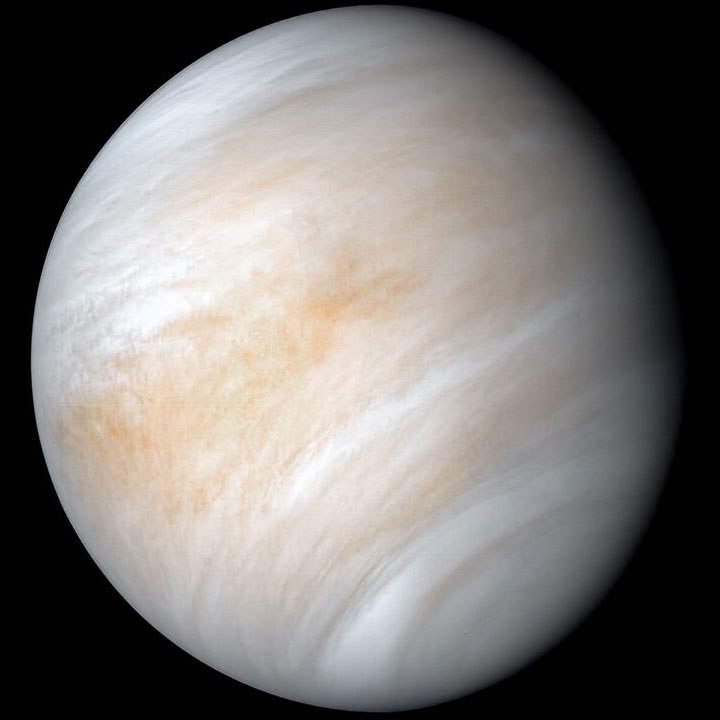Venus

The interior orbit of Venus means that it never strays far from the Sun in the sky.
Because of its highly reflective cloud cover, Venus is brighter than any star in the sky, as seen from Earth. It is so bright that it can be seen even in the daytime.
Venus’s rotation is slow and retrograde, most likely because of a collision between Venus and some other solar system body during the late stages of the planet’s formation.
The extremely thick atmosphere of Venus is nearly opaque to visible radiation, making the planet’s surface invisible from the outside. Spectroscopic examination of sunlight reflected from the planet’s cloud tops shows the presence of large amounts of carbon dioxide. Venus’s atmosphere is nearly 100 times denser than Earth’s. The temperature of the upper atmosphere is much like that of Earth’s upper atmosphere, but the surface temperature is 730 K.
Venus’s surface cannot be seen in visible light from Earth, but it has been thoroughly mapped by radar from Earth-based radio telescopes and orbiting satellites.
The most recent and most thorough survey has been carried out by the U.S. Magellan satellite. Venus’s surface is mostly smooth, resembling rolling plains with modest highlands and lowlands. Two elevated continent-sized regions are called Ishtar Terra and Aphrodite Terra. There is no evidence for plate tectonic activity as on Earth.